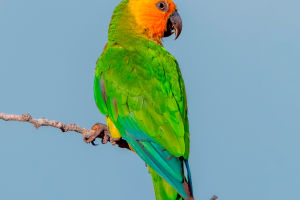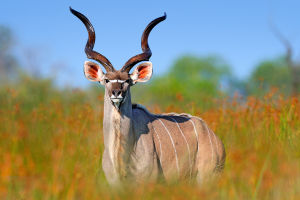Damselflies, delicate and agile flyers belonging to the order Odonata, are known for their slender bodies and stunning colors, often shimmering in shades of blue, green, or metallic hues.
These graceful insects are closely related to dragonflies, and while they may look similar at first glance, damselflies have unique characteristics that set them apart, from their wing shape to their more dainty build.
Distinct Features and Habitat
One way to tell damselflies apart from dragonflies is by observing their wings and posture. Damselflies have narrow, equal-sized wings that fold together over their bodies when at rest, while dragonflies keep their wings open. Their eyes are also positioned farther apart, giving them a softer, less “bulky” look compared to the dragonfly’s more robust head.
Damselflies thrive near clean water sources, such as ponds, lakes, and slow-moving streams, where they can often be seen gracefully flitting among plants. These habitats offer an ideal environment for their larvae, known as nymphs, which live underwater for the majority of their early lives. The presence of damselflies often indicates good water quality, as they are sensitive to pollution and require clean water for breeding.
Lifespan and Life Cycle
The life cycle of a damselfly has three stages: egg, nymph, and adult. Females lay their eggs on aquatic plants, just below the water’s surface. Once hatched, the nymphs live underwater for several months to even years, depending on the species. During this time, they feed on small aquatic organisms, using their quick reflexes and stealth to capture prey.
After undergoing several molts, nymphs emerge from the water and transition into the adult stage. This transformation, called metamorphosis, allows them to leave their watery world behind and take to the skies. As adults, damselflies have a brief lifespan, typically only a few weeks to months. During this period, they focus on finding mates, with males displaying vibrant colors to attract females.
Remarkable Vision and Hunting Skills
Damselflies have exceptional vision, aided by their large, compound eyes that cover most of their heads. These eyes are made up of thousands of tiny lenses, giving them a nearly 360-degree vision to spot prey and avoid predators. With their agile, flexible bodies and rapid flight, they are highly effective hunters, primarily feeding on mosquitoes, flies, and other small insects. Their hunting skills help control insect populations, making them beneficial to ecosystems and humans alike.
A Symbol of Beauty and Transformation
In various cultures, damselflies are symbols of transformation, change, and adaptability. Their journey from aquatic nymph to vibrant, winged adult embodies the beauty of metamorphosis. Additionally, their delicate flight and iridescent colors have inspired poetry, art, and folklore, capturing the imaginations of people worldwide.
Lykkers, the damselfly, with its elegance and fascinating life cycle, is more than just a beautiful sight around water. It plays a vital role in maintaining ecological balance and is a sign of a healthy environment. From its impressive hunting abilities to its symbolic transformation, the damselfly is a remarkable creature that showcases the beauty and resilience of nature.
Some facts about Damselfly
Video by Educational Facts


